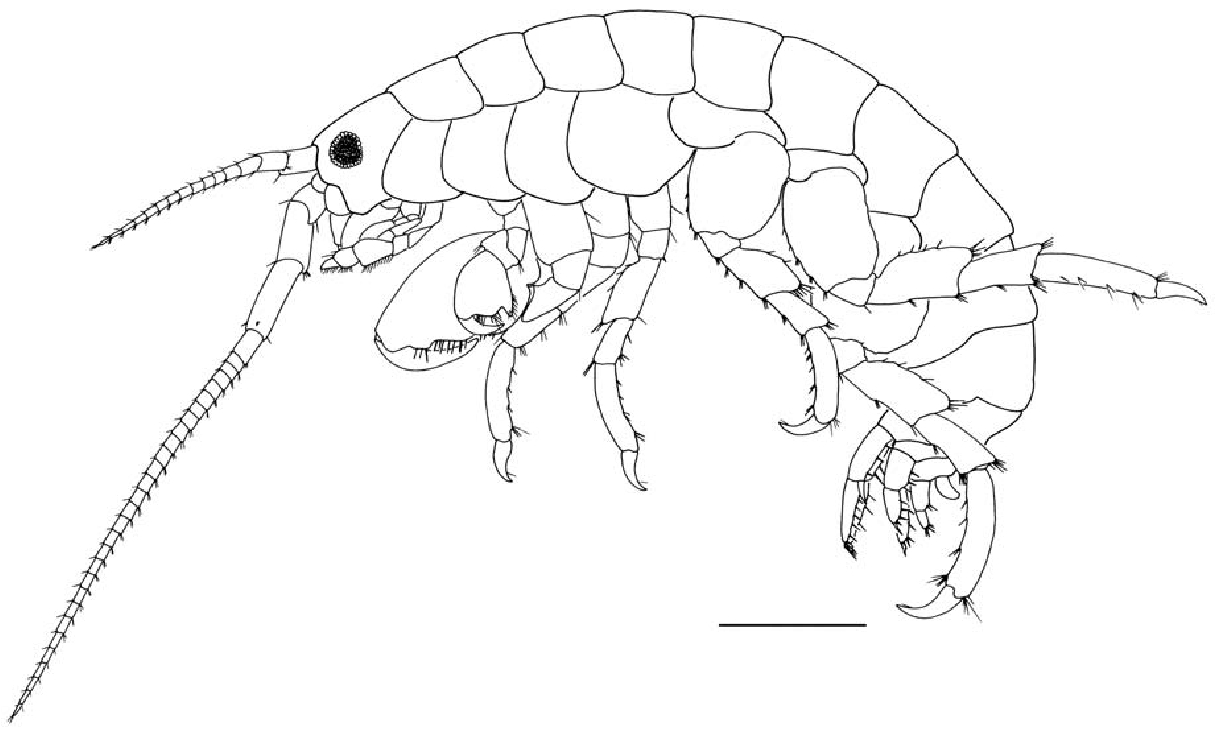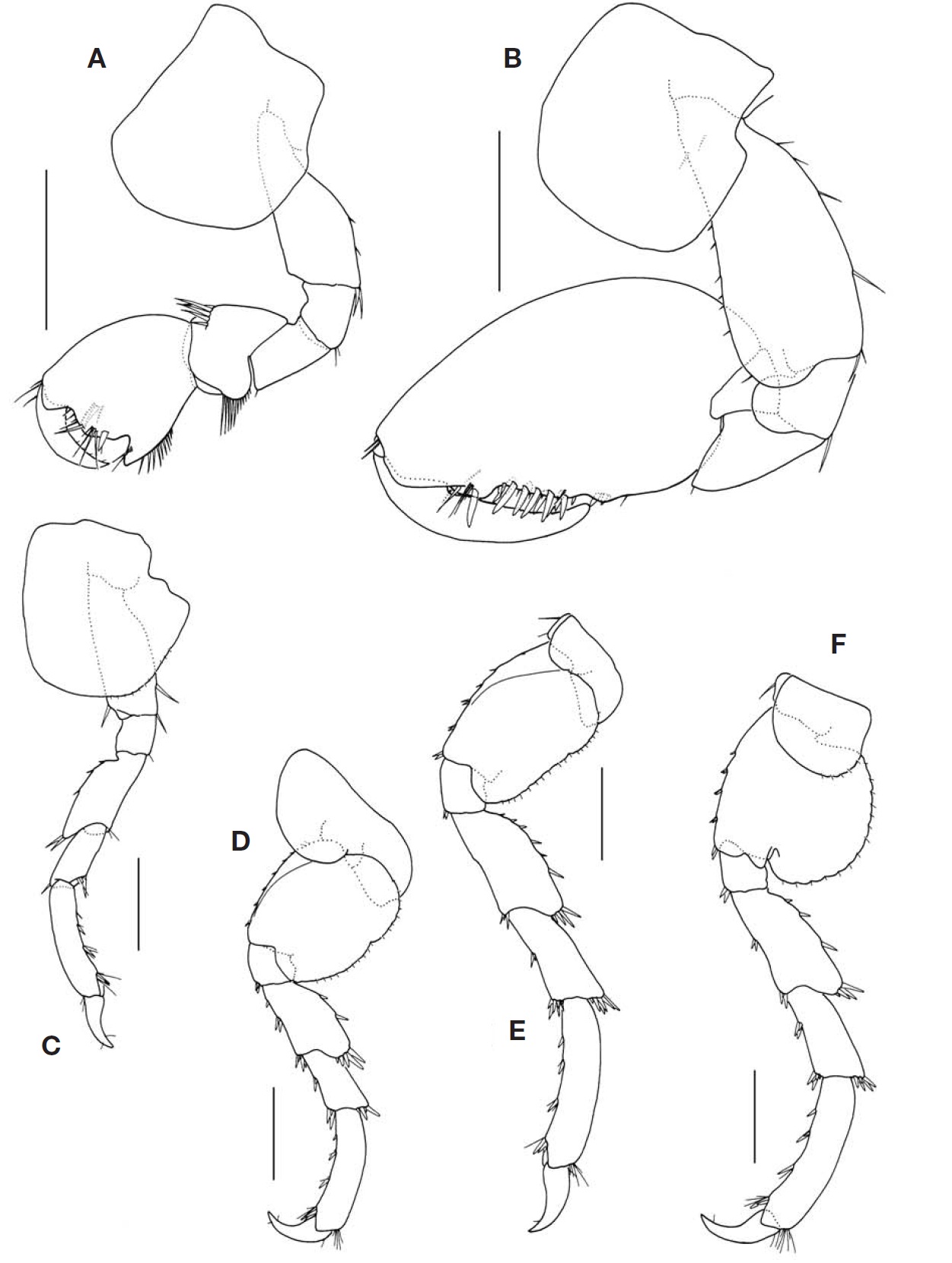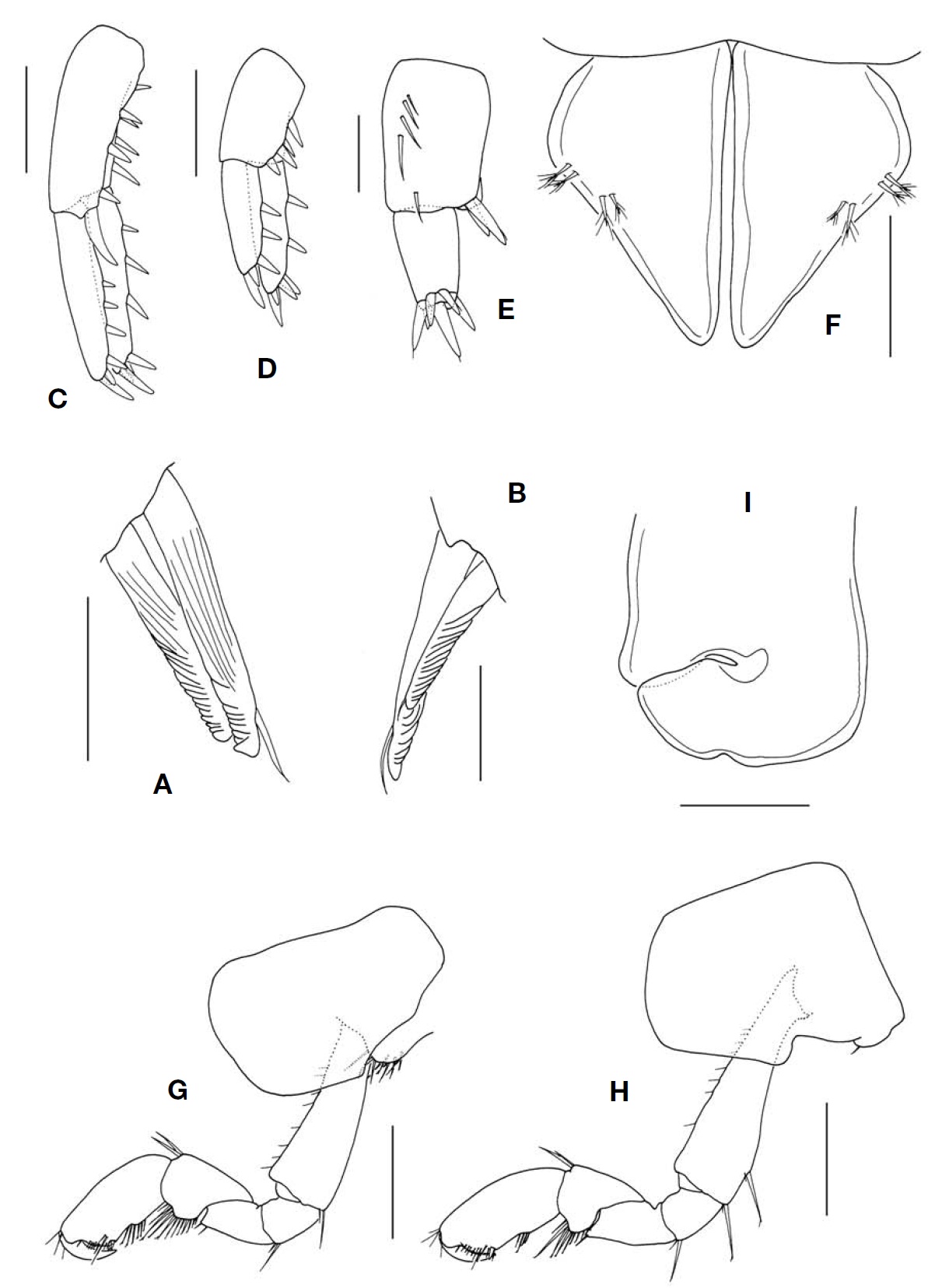



Members of the family Hyalidae are part of the littoral marine amphipod group and mainly inhabit intertidal zones and shallow water. Most members of the group are found among algae living in warmer waters (Barnard and Karaman, 1991; Hiwatari, 2003). A few subgroups of the hyalid amphipods, including the genus
Only one species,
Specimens were collected among algae living in the intertidal zone at Jeju Island, Korea and preserved in 95% ethanol. A stereomicroscope (MZ8; Leica, Wetzlar, Germany) and a compound microscope (BX-50; Olympus, Tokyo, Japan) were used for the observation. Dissection and mounting were conducted following the methodology of Barnard and Karaman (1991). Illustrations were made by using a drawing tube or camera lucida. Body length was measured from the tip of rostrum to the posterior end of urosomite 3. All specimens examined herein were deposited in the Marine Arthropod Depository Bank of Korea(MADBK, http://madbk.org) located at Seoul National University, Korea.
Order Amphipoda Latreille, 1816
Family Hyalidae Bulycheva, 1957
Genus Protohyale Bousfield and Hendrycks, 2002
Key to the species of the genus
1. Propodus of gnathopod 1 in male and female dissimilar to each other; palm of male gnathopod 2 with distinct truncate process ??????????????????????????????????????????????????????????????????????????????????
- Propodus of gnathopod 1 in male and female similar to each other; palm of male gnathopod 2 without process ??????????????????????????????????????????????
1*Protohyale pumila (Hiwatari and Kajihara, 1981) (Figs. 1-3)
Material examined. Korea: 216♂♂, 21♀♀, Jeju-do, Jocheon- eup, Hamdeog-ri, Hamdeog Beach, 29 May 2007.
Description. Male: Body (Fig. 1) 6.98 mm long, compressed. Lateral cephalic lobe slightly convex, anteroventral cephalic excavation shallow. Eye black, large. Terminal part of antenna 1 reaching about one-fourth portion of antenna 2 flagellum. Antenna 2 about 0.5 times as long as body length, peduncle 5 slightly longer than peduncle 4. Palp article 4 of maxilliped slightly broad, bearing short apical spine and short marginal setae.
Coxa of gnathopod 1 (Fig. 2A) broad; basis without anterodistal lobe; carpus broad, bearing five spines on anterodistal margin, with expanded posterodistal lobe; propodus broadly expanded, anterior margin unarmed, with posterior marginal setae; palm convex, defined by large and blunt cusp, with one spine near defining corner; dactylus fitting palm.
Coxa of gnathopod 2 (Fig. 2B) subquadrate; basis bearing anterodistal lobe; ischium with subcircular lobe; merus slightly extended; propodus very large, anterior margin convex; palm oblique, subequal as long as posterior margin, with distal truncate process having one spine and several setae, whole of palm bearing spines; dactylus fitting palm.
Coxa of pereopod 2 (Figs. 2C, 3A) widest in middle, with posteroproximal excavation; propodus bearing pair of locking spines, locking spines subequal in size, heavily striated.
Basis of pereopods 3-5 (Figs. 2D-F, 3B) broad, subcircular, weakly serrate on posterior margin; merus and carpus slender; propodus having pair of locking spines, proximal locking spine larger than distal one, locking spines weakly striated.
Peduncle of uropod 1 (Fig. 3C) as long as rami, having large distolateral spine and marginal spines; inner and outer rami with three dorsal spines, respectively.
Peduncle of uropod 2 (Fig. 3D) almost as long as rami, having marginal spines; inner and outer rami each with two dorsal spines.
Peduncle of uropod 3 (Fig. 3E) about 1.5 times as long as ramus, bearing five inner marginal setae and two apicodorsal spines; ramus with six apical spines.
Telson (Fig. 3F) completely cleft, both lobes having four small setae on lateral margin.
Female: Body 6.12 mm long, slightly smaller than that of male.
Basis of gnathopod 1 (Fig. 3G) weakly swollen anterodistally; propodus slender, subrectangular, middle part of posterior margin concave; palm oblique, simple; dactylus fitting palm.
Gnathopod 2 (Fig. 3H) similar to gnathopod 1, rather lar-
ger.
Pereon segment 2 (Fig. 3I) bearing split-like preamplexing notch; posterior lobe strongly expanded forward, and overlapping with anterior lobe; without locking slit on surface.
Distribution. Korea (Jeju Island), Japan.
Remarks.
The characteristics of our specimens coincide with those shown in Hiwatari and Kajihara’s original description based on specimens from Japan. Minor differences were observed in the shape of the carpus of gnathopod 1 and the ischium of gnathopod 2. The shape of male specimens was more rounded compared to that of the original description.
Recently, the large genus
Korean name: 1*꼬마채찍해조숨이옆새우


